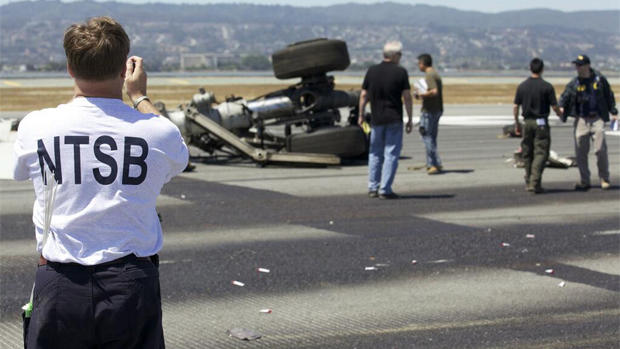Cockpit recordings reveal Asiana flight's frantic final moments
Just the thought of it is frightening: the pilot of a jetliner with more than 300 people on board doubted he has the ability to land the plane. But that is what came to light Wednesday about the man who was attempting to land the Asiana 777 that crashed last summer at the San Francisco Airport.
The pilot said he was worried about landing without the
aid of the airport's instrument landing system, which had been turned off
because of construction.
The National Transportation Safety Board held a hearing
Wednesday about the crash, which killed three people and has raised questions
about whether pilots have become too reliant on automated systems.
A trainee captain was flying the 777 during its final approach to San Francisco International. A more senior instructor pilot was next to him.
A transcript of the cockpit voice recording shows that in the final two minutes of the flight, a relief pilot in a cockpit jumpseat warned that the plane was descending too quickly.
"Sink rate, sir," he called out.
"Yes, sir," answered the trainee captain.
The conversation grew more frantic as an electronic system called out the declining altitude.
"Two hundred," said the electronic voice.
"It's low," said one of the pilots.
Seconds later, the pilots' control sticks shook, a warning that the plane was flying too slow to stay in the air.
"Forty,"
the system said. "Thirty."
"Twenty," said the system.
"Go around," said the trainee captain.
But it was too late. A second later, the plane crashed.
The instructor pilot told NTSB investigators he expected the aircraft's computerized autothrottle system to maintain the proper speed. But what none of the pilots realized was that they had inadvertently put the autothrottle on "hold."
"We do have an issue in aviation that needs to be dealt with, with respect to automation and performance, when it comes to the interaction between the aircraft and the human being," said NTSB Chairman Deborah Hersman. "We can always do better."
The trainee captain told the NTSB that he was "very concerned" about making his first 777 landing in San Francisco, because the landing aid called a glideslope was out of service at the airport, and he would have to make a visual approach. That, in his words, was a "very stressful factor."
